
- Home
- Travel Packages
- Top Destination
-
Travel Attraction
By Category
Top Attraction

- Travel Agents
- Car Rentals
- Hotels
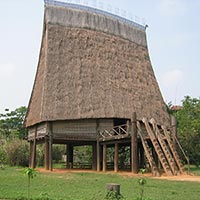
The capital of Vietnam, the city of Hanoi is a charming blend of East and the West. While on one hand you would see the busy metropolitan population pacing up and down the streets in cars, you would also spot hawkers wearing their traditional conical caps plying across the markets. The city has an energetic atmosphere and is the hub of all sorts of activities – from commercial to administrative to tourism. In October 2010, the city officially completed its 1000 years of establishment; a 4 km long Hanoi Ceramic Mosaic Mural was built to mark the occasion. An evening at the Hoan Kiem Lakeside would introduce you to the calm side of this city. It is a preferred spot to stroll around, read a book or meet your lover. Hanoi’s landscape is dotted with various museums, parks and temples worth visiting. One of the most interesting places amongst these is the Hoa Lo Prison Museum, narrating the stories of the Vietnamese struggle for independence from France.
Explore More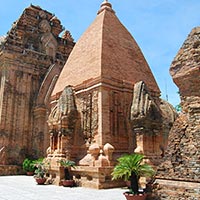
Located on the South Central Coast of Vietnam, Nha Trang is a prominent tourist destination in the country, known for its exotic beaches and scuba diving. Many Vietnamese and international vacationers come to this coastal town to celebrate the biennial Sea Festival. Also, it will be hosting the 2016 Asian Beach Games, which are just around the corner. The city’s crescent-shaped turquoise shoreline is dotted with many sculpture gardens and parks. For all these reasons, Nha Trang has been nicknamed as the Beach Capital of Vietnam. The inland streets exude a cosmopolitan feel with several dining options of multiple cuisines. As the sun sets, nightclubs in the city come alive and show the party side of this town. Stay at a beach resort and pamper yourself with a mud bath here. If you have a love for the waves, parties, food and laid back life, Nha Trang awaits your arrival.
Explore More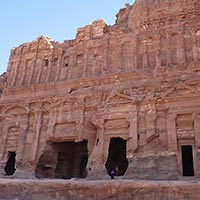
Presently the capital of Thua Thien Hue province in Vietnam, Hue once served as the imperial capital of the Nguy?n Dynasty. It is undoubtedly the most royal city of the country and is recognized as a UNESCO World Heritage Site. Its landscape is dotted with palaces, temples, monuments, pagodas, and tombs – many of which suffered heavy damages during the war years – narrate the story of an empire lost. Whether you are a history enthusiast or just a traveler exploring a city’s cultures, Hue would certainly quench your wanderlust. Situated on the Perfume River (H??ng Giang), this city offers a picturesque view on a clear day and is always exuding a sense of tranquility. New and old features have been juxtaposed throughout the cityscape and you can expect the comforts of modern life in an antique setting. Hue’s charm would have you hanging about here for as long as practically possible for you.
Explore More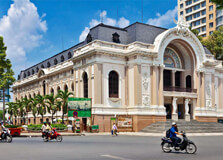
Ho Chi Minh City, formerly known as Saigon, is the largest and most vibrant city in Vietnam, located in the southern part of the country. It serves as the economic, cultural, and technological hub of Vietnam, boasting a population of over 9 million people. The city is a dynamic blend of old-world charm and modern development, with its skyline dotted by skyscrapers, shopping malls, and bustling commercial districts, while traditional markets and colonial-era architecture still stand as reminders of its rich history. Founded in 1698, the city evolved from a small trading port into a major economic center under French colonial rule, and after the reunification of Vietnam in 1975, it was renamed in honor of the revolutionary leader Ho Chi Minh. The city’s bustling streets are filled with motorbikes, street vendors, and colorful local markets, creating a lively and energetic atmosphere. Key attractions include the War Remnants Museum, the Notre-Dame Cathedral, and the Ben Thanh Market, while the nearby Mekong Delta offers scenic boat tours. Ho Chi Minh City is known for its delicious food, particularly its diverse street food, which includes iconic dishes like pho and banh mi. The city’s energy, rich culture, and rapid growth make it a must-visit destination in Southeast Asia.
Explore More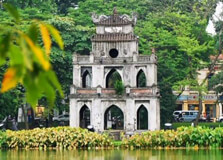
Hanoi, the capital of Vietnam, is a city steeped in history, culture, and tradition, offering a striking contrast to the fast-paced, modern Ho Chi Minh City. Located in the northern part of the country, Hanoi is known for its well-preserved colonial architecture, tranquil lakes, and winding streets filled with centuries-old temples and pagodas. The city, with a population of over 8 million people, combines old-world charm with a modern urban atmosphere, making it a fascinating destination for both history buffs and contemporary travelers. Founded over a thousand years ago, Hanoi is the political and cultural heart of Vietnam. The city's Old Quarter, with its narrow lanes and French-inspired buildings, is particularly famous for its historical significance and vibrant street life. Key landmarks include the Hoan Kiem Lake, the Ho Chi Minh Mausoleum, and the Temple of Literature, an ancient center of learning. The city also boasts a rich culinary scene, offering dishes like pho, bun cha, and egg coffee, which are famous throughout the country. With its blend of tradition and modernity, Hanoi offers a unique glimpse into Vietnam’s past while remaining a lively, evolving metropolis. It’s a place where history, culture, and everyday life intersect in fascinating ways.
Explore More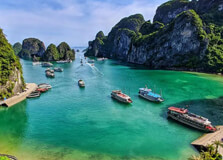
Ha Long, located in northeastern Vietnam, is a stunning coastal city renowned for its breathtaking natural beauty. Famous for the Ha Long Bay, a UNESCO World Heritage Site, the area features nearly 2,000 limestone islands and islets scattered across emerald-green waters, creating a serene and otherworldly landscape. Ha Long Bay's dramatic seascape, with towering karst formations and hidden caves, has made it a popular destination for travelers seeking adventure and tranquility. The city of Ha Long itself has grown rapidly in recent years, evolving from a small fishing town into a major tourist hub. Visitors flock here for a variety of activities, including boat cruises, kayaking, hiking, and exploring caves. The nearby Ti Top Island, with its panoramic views, and Sung Sot Cave, one of the largest and most beautiful caves in the region, are among the top attractions. Ha Long’s seafood cuisine is also a highlight, with fresh catches available at local markets and restaurants. Beyond its natural beauty, Ha Long offers a mix of modern amenities, including luxury resorts and a growing number of entertainment options, making it a well-rounded destination for both nature lovers and those seeking relaxation. Ha Long is a perfect escape for anyone looking to experience the wonders of Vietnam’s coastal landscape.
Explore More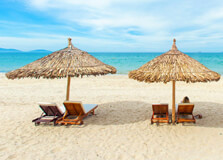
Hoi An, a charming coastal town in central Vietnam, is renowned for its well-preserved ancient town, vibrant cultural heritage, and picturesque riverside setting. A UNESCO World Heritage Site, Hoi An was once a bustling port during the 15th to 19th centuries, attracting merchants from across the globe. Today, it retains much of its historic architecture, with narrow streets lined by colorful buildings, lanterns, and traditional wooden houses. This blend of Vietnamese, Chinese, Japanese, and French influences gives Hoi An its unique and eclectic atmosphere. The town’s Old Quarter is the heart of Hoi An, where visitors can explore centuries-old temples, pagodas, and merchant houses, many of which have been carefully preserved. Key sites include the Japanese Covered Bridge, the Assembly Hall of the Fujian Chinese, and the vibrant central market. At night, the town transforms into a magical sight with lanterns lighting up the streets and the riverside, creating a tranquil ambiance. Hoi An is also famous for its culinary scene, with dishes like *cao lau* and *banh mi* drawing food lovers from all over. Beyond the town, Hoi An’s pristine beaches, such as An Bang Beach, offer a relaxing escape. With its rich history, cultural vibrancy, and natural beauty, Hoi An is one of Vietnam's most enchanting destinations.
Explore More
Da Nang, located in central Vietnam, is a dynamic coastal city known for its blend of modern development, natural beauty, and rich cultural heritage. As the country’s third-largest city, Da Nang is an important economic and cultural hub, with a strategic location between Hanoi and Ho Chi Minh City. It offers a unique mix of urban excitement and peaceful landscapes, making it a popular destination for both tourists and business travelers. Da Nang is famous for its stunning beaches, including My Khe Beach, which is known for its golden sands and clear waters, ideal for swimming and water sports. The city is also home to the Marble Mountains, a cluster of five limestone hills that offer scenic views, caves, and pagodas. Nearby, the Golden Bridge, held up by giant stone hands, is an architectural marvel and a top attraction. In addition to its natural beauty, Da Nang has a rich history, with landmarks like the Cham Museum, which showcases artifacts from the ancient Cham civilization, and the Dragon Bridge, which lights up at night in a spectacular display. The city is also a gateway to the ancient town of Hoi An and the imperial city of Hue, making it a convenient base for exploring central Vietnam. With its combination of modernity, culture, and nature, Da Nang is a must-visit destination.
Explore More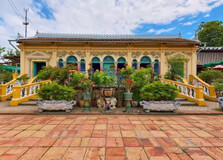
Can Tho, located in the heart of Vietnam's Mekong Delta, is a vibrant and charming city known for its lush landscapes, bustling rivers, and rich cultural traditions. As the largest city in the Mekong Delta region, Can Tho serves as a major hub for commerce and agriculture, particularly rice and fruit production. It offers visitors a glimpse into the daily life of the people who live along the Mekong River, with its unique blend of rural charm and urban development. One of the highlights of Can Tho is its famous floating markets, particularly the Cai Rang Floating Market, where vendors sell fresh produce, flowers, and local delicacies from boats. The sight of colorful boats drifting along the river at sunrise is a quintessential experience for visitors. The city also offers picturesque riverside walks, traditional villages, and opportunities for boat tours through winding canals that reveal a tranquil and authentic side of Vietnam. In addition to its natural beauty, Can Tho has several cultural attractions, including the ancient Munirangsyaram Pagoda and the Can Tho Museum, which showcases the region's history and culture. With its laid-back atmosphere, welcoming locals, and unique river-based lifestyle, Can Tho provides an unforgettable look at life in the Mekong Delta.
Explore More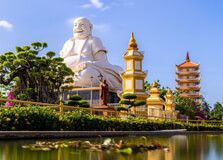
My Tho, a peaceful city in southern Vietnam, is the capital of Tien Giang Province and a gateway to the Mekong Delta. Located along the Mekong River, My Tho is known for its lush landscapes, tranquil waterways, and vibrant local culture. The city offers a more relaxed, off-the-beaten-path experience compared to other urban centers in Vietnam, making it a popular stop for travelers seeking a deeper connection with the region’s rural life. One of the key attractions of My Tho is its proximity to the Mekong River, where visitors can take boat trips to explore the maze of canals, lush islands, and floating markets. The surrounding area is home to traditional brick kilns, fruit orchards, and local villages, providing insight into the everyday lives of those living in the delta. A highlight of the region is the scenic Thoi Son Island, also known as Unicorn Island, famous for its coconut candy production and serene surroundings. Culturally, My Tho boasts a number of Buddhist temples, including the Vinh Trang Pagoda, which is known for its grand architecture and peaceful ambiance. With its natural beauty, rich cultural heritage, and relaxed atmosphere, My Tho is a perfect starting point for exploring the wonders of the Mekong Delta.
Explore More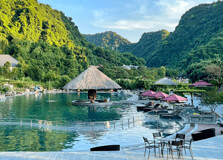
Ninh Binh, located in northern Vietnam, is a stunning province known for its dramatic landscapes, ancient temples, and tranquil rural charm. Often referred to as "Halong Bay on land," Ninh Binh is renowned for its striking karst mountains, winding rivers, and lush green valleys, creating a serene and picturesque environment. The region is a perfect blend of natural beauty and historical significance, making it a popular destination for both nature lovers and history enthusiasts. One of the top attractions in Ninh Binh is Tam Coc, a picturesque area where visitors can take boat rides through limestone caves and lush rice paddies. Another must-see site is Trang An, a UNESCO World Heritage Site, famous for its scenic river tours that pass through caves and temples nestled among towering limestone peaks. The ancient capital of Hoa Lu, which dates back to the 10th century, offers insight into Vietnam’s early history with its well-preserved temples dedicated to former emperors. Ninh Binh is also home to Cuc Phuong National Park, Vietnam's oldest national park, offering hiking trails through dense jungles and opportunities for wildlife spotting. With its breathtaking landscapes and rich cultural heritage, Ninh Binh is a peaceful escape that showcases the natural beauty and history of Vietnam.
Explore More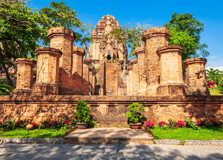
Phan Thiet, a coastal city in southern Vietnam, is best known for its pristine beaches, tranquil fishing villages, and vibrant local culture. Located in Binh Thuan Province, Phan Thiet offers a perfect blend of natural beauty, relaxed seaside vibes, and a rich history, making it a popular destination for both relaxation and adventure. One of the main attractions of Phan Thiet is the nearby Mui Ne Beach, famous for its golden sands, clear waters, and consistent winds, making it a popular spot for kite surfing and windsurfing. The area is also home to the stunning red and white sand dunes, which offer unique opportunities for sandboarding or simply enjoying the dramatic landscapes. Beyond its beaches, Phan Thiet has a rich cultural heritage, with highlights including the ancient Po Sah Inu Cham Tower, a testament to the region’s Cham civilization, and the bustling fishing port, where visitors can witness the daily life of local fishermen. The city is also known for its delicious seafood, including fresh shrimp, crab, and the region’s specialty, fish sauce. With its combination of natural beauty, vibrant culture, and outdoor activities, Phan Thiet is a peaceful yet exciting escape for anyone looking to experience the coastal charm of Vietnam.
Explore More6 Night/ 7 Day - Vietnam Tour
7 Days/ 6 Night
Ho Chi Minh City - Hanoi - Da Nang
9N Impressive Vietnam - Cambodia Tour
10 Days/ 9 Night
Siem Reap - Phnom Penh - Ho Chi Minh City - Ha Long - Hanoi
Vietnam 10 Night Tour Package
11 Days/ 10 Night
Ho Chi Minh City - Da Nang - Hoi An - Ha Long - Lao Cai - Hanoi
Trip To Vietnam 5N - 6D
6 Days/ 5 Night
Da Nang - Hanoi
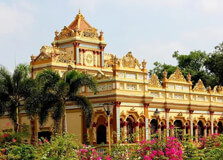
Bến Tre, located in the heart of Vietnam's Mekong Delta, is a peaceful and charming province known for its lush landscapes, coconut groves, and traditional riverside culture. Often referred to as the "land of coconuts," Bến Tre produces some of the finest coconuts in Vietnam, and the tree is deeply intertwined with the region's daily life, economy, and cuisine. The province's landscape is a maze of canals, rivers, and islands, making it a perfect destination for exploring by boat. Visitors can take relaxing boat rides along the Mekong River and its tributaries, passing through small villages and seeing locals go about their daily activities—whether fishing, harvesting coconuts, or making traditional handicrafts. The region is also known for its coconut-based products, including coconut candy, which can be sampled at local factories. Bến Tre offers a quieter, more authentic Mekong Delta experience compared to more tourist-heavy destinations. Key attractions include the lush Vam Ho Bird Sanctuary, where visitors can observe diverse bird species, and the tranquil Thanh Hoa Island, perfect for a peaceful retreat. With its natural beauty, laid-back atmosphere, and deep connection to local traditions, Bến Tre provides an enriching and immersive escape into Vietnam's rural heartland.
Explore More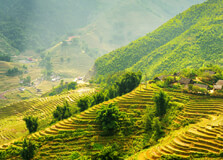
Lào Cai, located in the far northwest of Vietnam, is a province known for its stunning natural beauty, diverse ethnic cultures, and strategic location along the Chinese border. The province is famous for its dramatic mountain landscapes, with the Hoàng Liên Son mountain range towering over the region and providing breathtaking views of terraced rice fields, lush forests, and cascading waterfalls. Lào Cai is also home to Fansipan, the highest peak in Vietnam, often referred to as the "Roof of Indochina," which attracts trekkers and adventure enthusiasts. The city of Lào Cai serves as a key gateway to the northern highlands and is well-connected to the popular tourist town of Sapa, just a short distance away. Sapa’s unique blend of scenic beauty and ethnic diversity—home to several minority groups such as the H'mong, Tay, and Dao—makes it one of the most visited destinations in northern Vietnam. Travelers flock to Sapa for its picturesque terraced fields, cool climate, and vibrant local markets. In addition to its natural allure, Lào Cai boasts rich cultural experiences, including visits to remote villages, traditional festivals, and opportunities to interact with the region's diverse indigenous communities. With its spectacular landscapes and cultural richness, Lào Cai is a must-visit destination for those seeking adventure and an authentic taste of Vietnam's northern frontier.
Explore More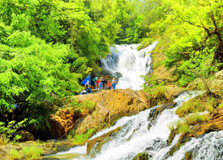
Đà Lạt, often referred to as the City of Eternal Spring, is a charming highland town in the Central Highlands of Vietnam. Known for its cool climate, lush pine forests, and vibrant floral landscapes, Đà Lạt offers a refreshing escape from the tropical heat of Vietnam’s lowlands. Located at an altitude of around 1,500 meters, the city enjoys mild temperatures year-round, making it a popular retreat for both locals and tourists seeking a peaceful, scenic getaway. Founded by the French in the early 20th century, Đà Lạt boasts a mix of colonial architecture, including charming villas and churches, alongside stunning natural landscapes. The town is surrounded by beautiful lakes, waterfalls, and hills, with highlights like Xuan Huong Lake, the serene Valley of Love, and the impressive Datanla Falls. The city is also famous for its flower gardens, with the annual Đà Lạt Flower Festival celebrating the region’s rich horticultural heritage. In addition to its natural beauty, Đà Lạt is known for its unique coffee culture, vibrant markets, and delicious local produce, including strawberries, artichokes, and wine. With its laid-back atmosphere, scenic surroundings, and rich history, Đà Lạt is a beloved destination for those seeking a peaceful yet captivating experience in Vietnam's central highlands.
Explore More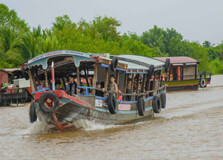
Vĩnh Long, located in the heart of Vietnam's Mekong Delta, is a charming province known for its peaceful riverside landscapes, traditional villages, and rich agricultural heritage. Situated on the banks of the Tien River, Vĩnh Long offers a perfect blend of lush greenery, winding waterways, and a slower pace of life that captures the essence of the Mekong Delta. The province is famous for its vibrant orchards, particularly its tropical fruit production. Visitors can explore the local fruit farms, where they can sample fresh produce like mangoes, durian, and longan. Vĩnh Long is also home to several floating markets, such as the Phu Quoi Market, where locals trade goods directly from boats, offering an authentic experience of the region’s river-based lifestyle. In addition to its natural beauty, Vĩnh Long boasts several cultural and historical sites. Notable attractions include the Vĩnh Long Pagoda, with its peaceful atmosphere and intricate architecture, and the ancient Cu Lao An Binh Island, which is perfect for exploring traditional village life. The province is also known for its traditional crafts, including handmade pottery and woven goods. With its lush landscapes, rich culture, and serene atmosphere, Vĩnh Long offers an immersive and authentic look at life in the Mekong Delta.
Explore More
Phú Quốc Island, located off the southwestern coast of Vietnam in the Gulf of Thailand, is the country's largest island and a top destination for those seeking sun, sand, and natural beauty. Known for its pristine beaches, crystal-clear waters, and lush tropical landscapes, Phú Quốc offers a perfect blend of relaxation and adventure. The island’s unspoiled shores, such as Long Beach and Sao Beach, are ideal for swimming, sunbathing, and water sports, while its coral reefs make it a popular spot for snorkeling and diving. Beyond its beaches, Phú Quốc is home to lush jungles, rolling hills, and national parks, including Phú Quốc National Park, which is a haven for wildlife enthusiasts and hikers. The island also has a rich cultural history, with attractions like the Dinh Cau Temple and the traditional fishing village of Ham Ninh, where visitors can experience local life and enjoy freshly caught seafood. Phú Quốc is also famous for its production of fish sauce, a key ingredient in Vietnamese cuisine, and the island has a growing reputation for luxury resorts, offering upscale accommodations and spa experiences. With its natural beauty, relaxed atmosphere, and diverse attractions, Phú Quốc is an idyllic destination for those looking to experience the best of Vietnam’s coastal charm.
Explore More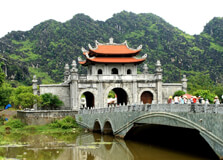
Hưng Yên, located in the Red River Delta in northern Vietnam, is a province known for its rich cultural heritage, scenic rural landscapes, and vibrant agricultural life. Situated just 30 kilometers south of Hanoi, Hưng Yên offers visitors a peaceful escape from the hustle and bustle of the capital, with its lush green fields, winding rivers, and traditional villages. The province is famous for its production of longan fruit, which is celebrated in the region’s markets, and its thriving agricultural industry, which includes rice cultivation and fish farming. The picturesque countryside, with its lush orchards and tranquil canals, makes it an ideal place for cycling and exploring rural life in northern Vietnam. Hưng Yên is also home to several historical and cultural sites, including the famous Phu Dong Temple, dedicated to the legendary hero Phu Dong, and the ancient Binh Bridge, an iconic structure that dates back centuries. The region also boasts a number of pagodas, including the Bao Minh Pagoda and the Chu Dong Tu Temple, which are significant to local religious practices. With its blend of natural beauty, agricultural traditions, and historical landmarks, Hưng Yên offers a unique and authentic glimpse into rural Vietnam, making it a charming destination for those seeking tranquility and cultural immersion.
Explore More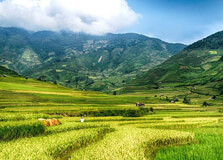
Hưng Yên, located in the Red River Delta in northern Vietnam, is a province known for its rich cultural heritage, scenic rural landscapes, and vibrant agricultural life. Situated just 30 kilometers south of Hanoi, Hưng Yên offers visitors a peaceful escape from the hustle and bustle of the capital, with its lush green fields, winding rivers, and traditional villages. The province is famous for its production of longan fruit, which is celebrated in the region’s markets, and its thriving agricultural industry, which includes rice cultivation and fish farming. The picturesque countryside, with its lush orchards and tranquil canals, makes it an ideal place for cycling and exploring rural life in northern Vietnam. Hưng Yên is also home to several historical and cultural sites, including the famous Phu Dong Temple, dedicated to the legendary hero Phu Dong, and the ancient Binh Bridge, an iconic structure that dates back centuries. The region also boasts a number of pagodas, including the Bao Minh Pagoda and the Chu Dong Tu Temple, which are significant to local religious practices. With its blend of natural beauty, agricultural traditions, and historical landmarks, Hưng Yên offers a unique and authentic glimpse into rural Vietnam, making it a charming destination for those seeking tranquility and cultural immersion.
Explore More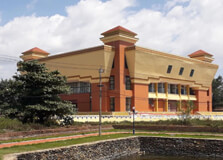
Đồng Hới, the capital of Quảng Bình Province in central Vietnam, is a coastal city known for its natural beauty, historical significance, and proximity to some of Vietnam's most renowned natural attractions. Located along the South China Sea, the city boasts long stretches of sandy beaches, such as Nhật Lệ Beach, which is a popular spot for swimming, water sports, and leisurely walks. The beachside atmosphere, combined with the mild climate, makes it an attractive destination for both locals and international travelers. The area around Đồng Hới is rich in history, as it served as an important base during the Vietnam War, and remnants of its past can be seen in the Quảng Bình Museum. The city is also the gateway to Phong Nha-Kẻ Bàng National Park, a UNESCO World Heritage Site famous for its stunning limestone caves, including the massive Sơn Đoòng Cave, the largest cave in the world. The park also offers opportunities for trekking, caving, and exploring unique ecosystems. In addition to its natural attractions, Đồng Hới is a lively city with a vibrant market scene, offering fresh seafood and local products. With its coastal charm, historical sites, and proximity to natural wonders, Đồng Hới is a fascinating destination for travelers seeking adventure, culture, and relaxation.
Explore MoreVietnam, officially called as Socialist Republic of Vietnam, is located at the easternmost end of Indochina Peninsula in Southeast Asia. Vietnam has many historical sites, national parks, world heritage destinations and beautiful scenic beauty to offer to its visitors. Moreover, tourism industry of Vietnam forms one of the major sources for its increased revenues. Vietnam offers quiet and peaceful environment along with the deep blue seas, where one can enjoy at the fullest, with no worldly worries.
Dong (VND)
331,210 kilometer Square (128,565 miles square)
90,388,000 (estimated)
Vietnamese
84
UTC+7
Vietnam has tropical climate. Vietnam experiences rainfall between May till September. Moreover there is difference in northern and southern climates temperatures. Northern region of Vietnam is much cooler than the southern region.
The latitudinal and longitudinal extent of Vietnam is 8° and 24°N and 102° and 110°E respectively.
Territory & Capital : China forms the northern boundary of Vietnam and to its northwest lies Laos. Cambodia is situated in the southwestern region of Vietnam and South China Sea forms the eastern boundary of the country. Temperature varies from 5 degree Celsius in December-January to 37 degree Celsius in July-August in the northern region. The temperature in south is between 21 and 28 degree Celsius throughout the year.
Hanoi is the capital city of Vietnam.
Suitable Visiting Seasons : The time period between January to March is the best time to visit Vietnam. It not only experiences pleasant cool atmosphere but also has major festivals in this duration including the T?t festival.
Vietnam has three major international airports namely, Noi Bai in Hanoi, Da Nang International Airport in Da Nang, and Tan Son Nhat in Ho Chi Minh City.
Bicycles, motorcycles, scooters, buses and various other automobiles can be hired to travel inside Vietnam. Vietnam is also inbuilt with superfast railway trains.
Leaving few Asian and European countries all other citizens require visa to enter Vietnam